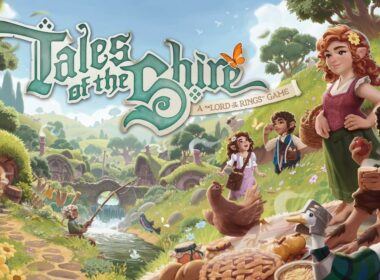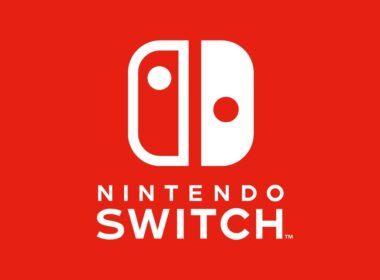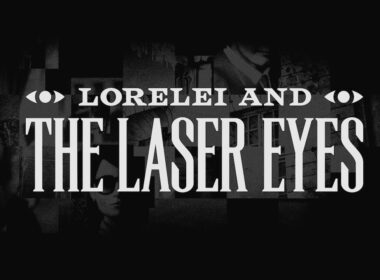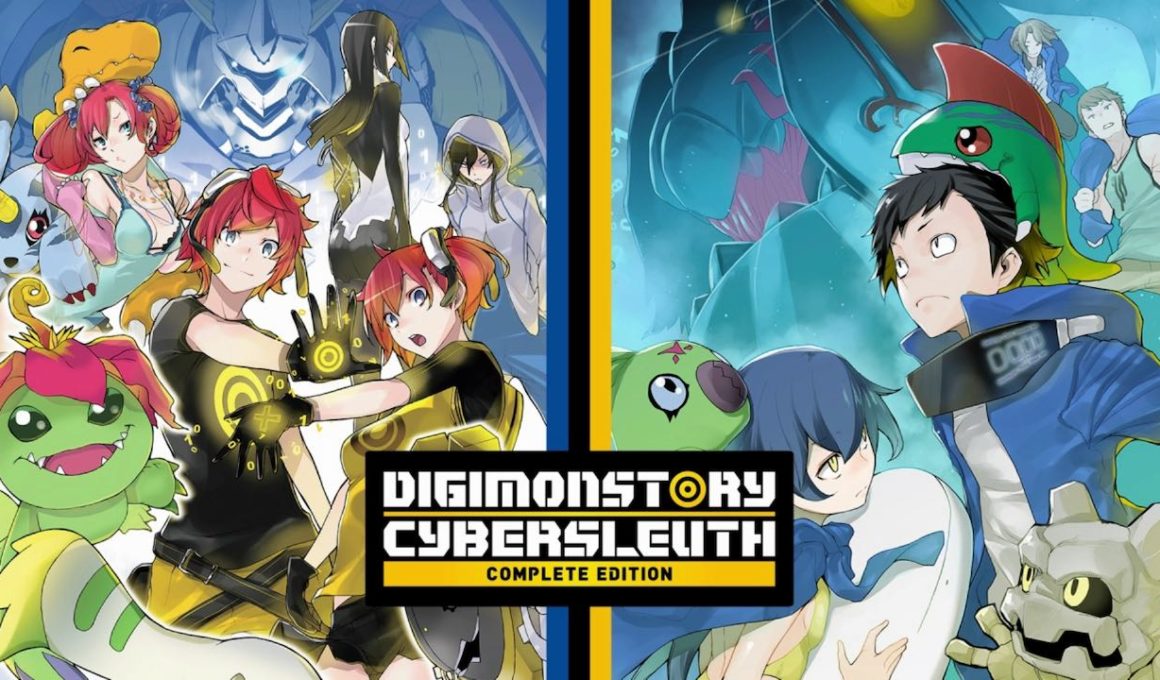When Digimon Story: Cyber Sleuth came out on the PlayStation Vita and PlayStation 4, it scratched a long-forgotten itch for me. Take the monster collecting aspects of Pokémon, a combat system closer to Shin Megami Tensei, and frame the story around being a detective with Mega Man Battle Network themed problem-solving. What’s truly brilliant about Cyber Sleuth is that while it seems inspired by all these series, it gives these elements a fresh spin and feels like its own beast entirely.
The same can be said for Cyber Sleuth’s follow-up two years later, Hacker’s Memory, which took the same formula and told the story from another perspective. Despite Hacker’s Memory being a weaker experience than the original, both are very good games that I’ve felt have always been criminally underrated. Which is why I was thrilled to learn that both games were getting another chance on the Switch and Steam, as the Digimon Story Cyber Sleuth: Complete Edition.
Cyber Sleuth begins in the near future with your mostly silent character, whose name and gender you can choose, meeting with their friends in a VR cyberspace network called EDEN. A hacker tells them to meet up in a dangerous section of EDEN called Kowloon, and gives them a program that lets them capture Digimon, which are programs that roam the cyberspace and are used by hackers to accomplish their goals.
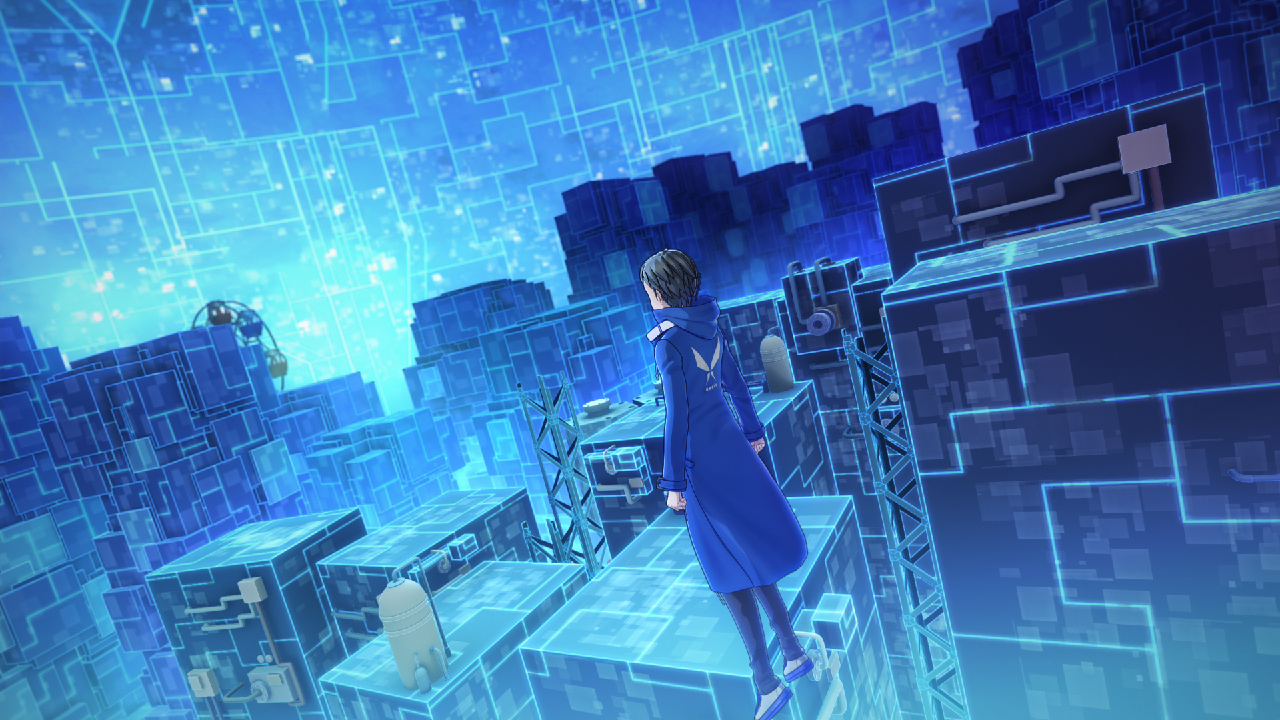
After picking your starter Digimon, the group is attacked by a mysterious monster which attacks the protagonist before he’s able to completely log out. This has disastrous consequences, leaving the protagonist’s body in a coma and their consciousness stuck as half data and half-human. However, this data form allows them to jump between the real world and cyberspace as much as they wish, leading them to team up with a detective named Kyoko Kuremi to get to the bottom of this and solve a variety of cyber-crimes along the way.
Hacker’s Memory has a much less ambitious premise, but this is intentional given that it’s a side story that takes place during the events of Cyber Sleuth. The protagonist this time is a boy whose EDEN account information was stolen by a group of hackers. After facing extreme amounts of social ostracization by his classmates for assuming he’s a criminal, he decides to join up with a small hacker group named Hudie to prove himself innocent. After joining up with them, he takes up a series of odd jobs to help take down malicious hackers while trying to find out the truth of his Identity Theft. The stakes aren’t as high in this, but I appreciate the attempt to make the protagonist’s conflict a bit more down to earth.
It should be mentioned that despite taking place at the same time as Cyber Sleuth, Hacker’s Memory assumes you played that game first. It’s a good idea to play them in release order to get the best experience. If anything, the Complete Edition makes the original Cyber Sleuth more approachable than ever, as it adds in all the improvements from Hacker’s Memory. 92 Digimon from Hacker’s Memory are added in, including all the expanded evolution possibilities. The games benefit more from being bundled together than just this, and use a shared save slot which allows you to carry over your Field Guide – Digimon’s take on the Pokédex – between both games.
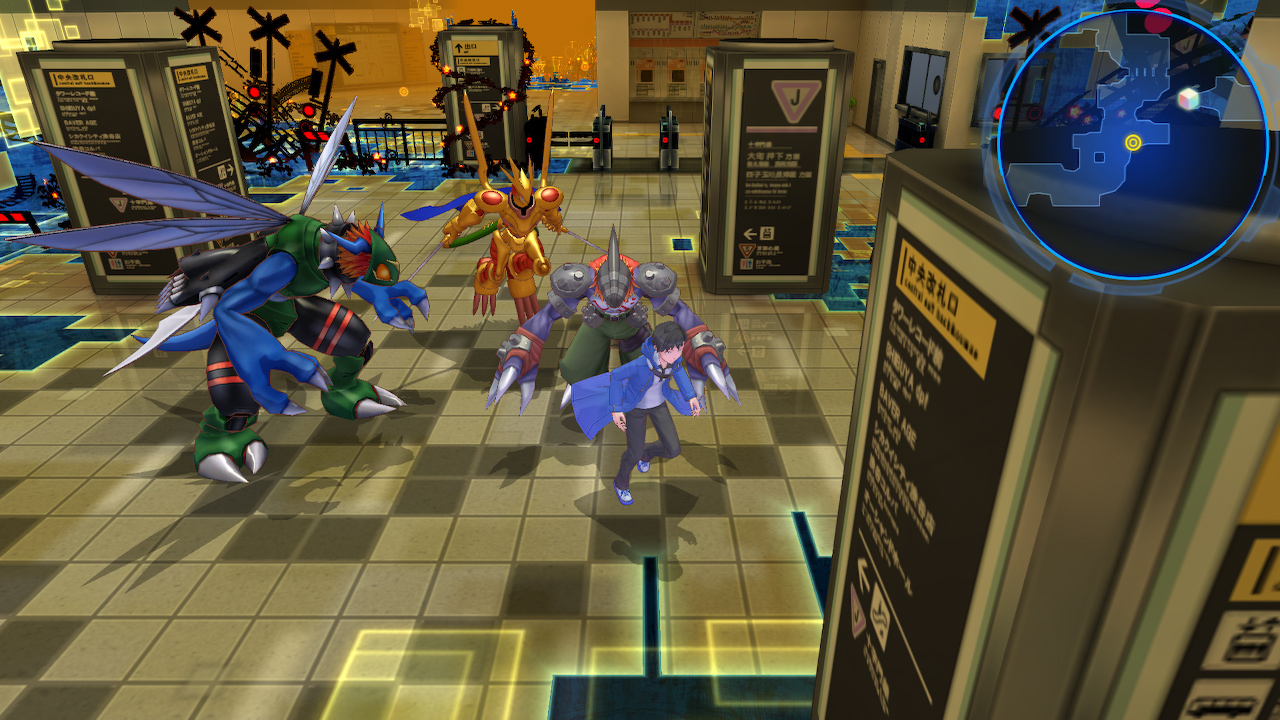
Being both built off the same engine, there are no real differences between the core gameplay mechanics. Some people may find this to be a flaw, but I don’t really see any issue with this since there’s no reason to fix what isn’t broken. The gameplay is split between real-world investigation and cyberspace dungeon crawling. You’ll usually start by getting a case (Cyber Sleuth) or mission (Hacker’s Memory) which will involve you running around gathering information.
This, in my opinion, is absolutely the highlight of the game. Exploring the various districts of Tokyo is a ton of fun, with a lot of things to do and interesting NPCs to talk to. Once you get enough information, you’ll usually enter or hack into various pieces of technology to figure out what’s going on. As I mentioned previously, this mechanic reminded me a lot of the “Jacking In” system in Mega Man Battle Network, which is a concept that I’ve rarely seen utilized in more RPGs. For example, a certain case early in Cyber Sleuth involves you having to enter the cyberspace inside an Air Conditioning unit to get to the bottom of why Nakano, where Kuremi’s detective agency is located, is getting abnormally cold. You have to go through a mini-dungeon here to find and defeat the culprit, a giant snow-based Digimon. It’s simple, but little things like this put a big dumb grin on my face.
Battles play out like most turn-based monster-collecting RPGs, where you organize a team out of a wide variety of Digimon and cycle through them when you need to. Three Digimon are allowed to be active in battles at once, with the ability to switch them out with any Digimon in your reserves as necessary. Like its contemporaries, the goal of fights in Cyber Sleuth is to take advantage of elemental weaknesses. One neat mechanic these games bring to the table is Cross Combos, where two or more Digimon on the timeline have the chance of combining their attacks together to cause more damage. I don’t think the overall battle system breaks the mold by any means, but it’s effective. My only main critique is that both games start way too easy, with it being a while before any actual challenge is provided to the player.
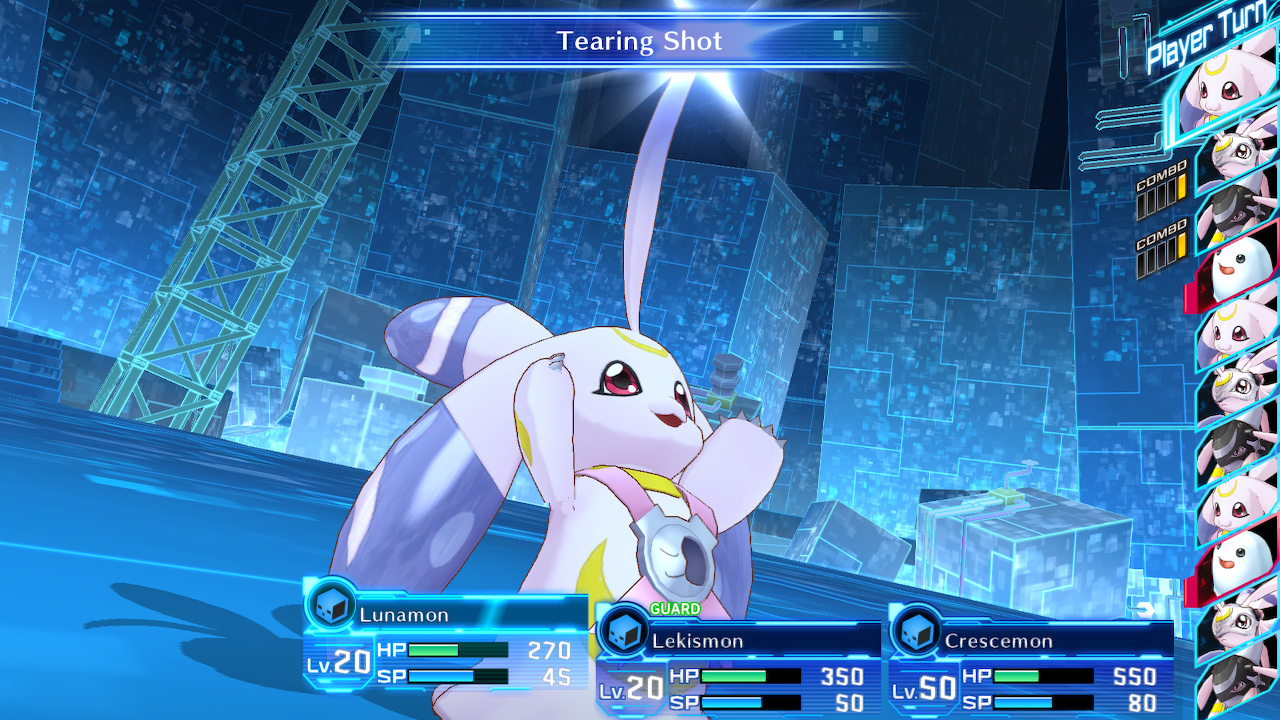
What I found to be more engaging than the battle system is the act of managing your Digimon. At various parts of the world you can enter a place called the DigiLab which is where players can organize their party, convert Digimon from data, revisit old dungeons, partake in online battles, digivolve your Digimon, and more. Converting Digimon is how you add more of them to your ranks and can be done when you’ve seen them enough times on the field. The evolution mechanics here are probably my favorite I’ve ever seen. There’s not only a lot of conditional branches each form can digivolve to, but your Digimon can go back to previous forms whenever they want. There’s so much freedom to all of this, and it makes fleshing out your Field Guide a blast.
What makes all these mechanics come together in such a wonderful package is the presentation. The art direction was handled by Suzuhito Yasuda, well known for his work on both Durarara! and the Shin Megami Tensei: Devil Survivor games. The characters all look amazing and make the transition into 3D seamlessly. Some of the more ridiculous parts of Yasuda’s anatomy have been toned down, with only the gorgeous sense of style on his characters remaining which helps a lot. The stylized nature of the character models, user interface, and environments make it hard to ever tell that these games were originally designed with the Vita in mind.
Yasuda isn’t the only notable name, and fans of the Danganronpa series might be thrilled to learn that each game’s soundtrack was composed by Masafumi Takada. While I prefer the soundtrack of the original game more than Hacker’s Memory, both have great soundtracks that bring a lot of character and energy to them. It nails the vibe of being the titular Cyber Sleuth, and Takada was a perfect choice.
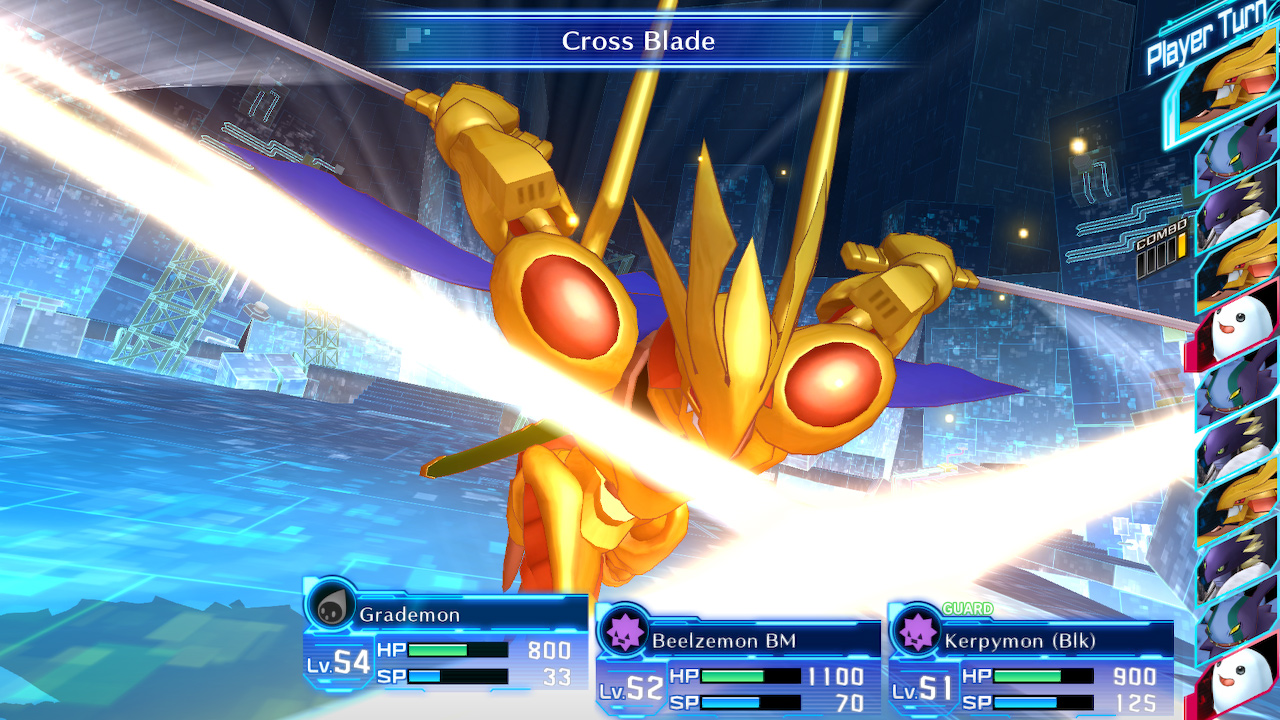
All that’s left is to discuss how the Switch port holds up, and, thankfully, I had very few issues with it. The resolution is on par with the PS4 release instead of the Vita version and both games looked great to play on my Switch Lite. In both docked and undocked, the framerate managed to mostly stay at 60 frames per second. I noticed some dips to what appeared to be 30 frames per second in certain parts of the cyber space dungeons, but that never bothered me too much since they were rare. What’s a bit more noticeable than that is a slight quirk I noticed with the frame rate in battles, where certain attacks will make the game pause for half a second when they connect. I couldn’t figure out what would cause this because it’s not every attack, just some of them. Overall, the Switch port is very solid and I have no issue recommending this version to people.
It’s hard not to when the Digimon Story Cyber Sleuth: Complete Edition packs so much value for the asking price of $50. I’ve never played a monster collecting game with a sense of style as fresh as these, with both story and gameplay being pretty unique as well. They’re fun games that could easily last you over 100 hours altogether. Even those who aren’t usually fans of Digimon are likely to enjoy this Complete Edition quite a lot because that’s exactly what happened to me when I first played Cyber Sleuth back in 2016. This is a great case of a company understanding the need to mature along with their fanbase, leading to a series of games that stand out amongst its competition while never losing sight of what people fell in love with to begin with.
Version Tested: Nintendo Switch
Review copy provided by Bandai Namco Entertainment

